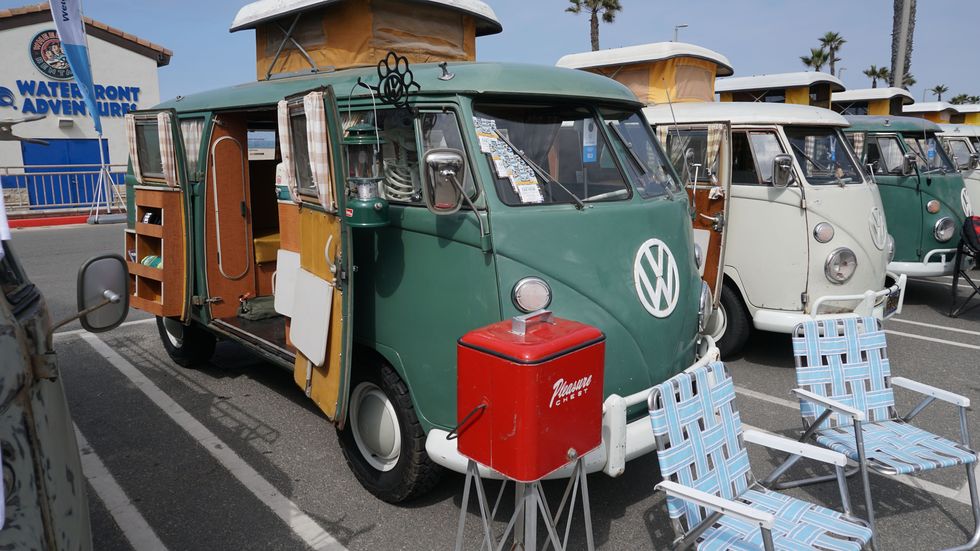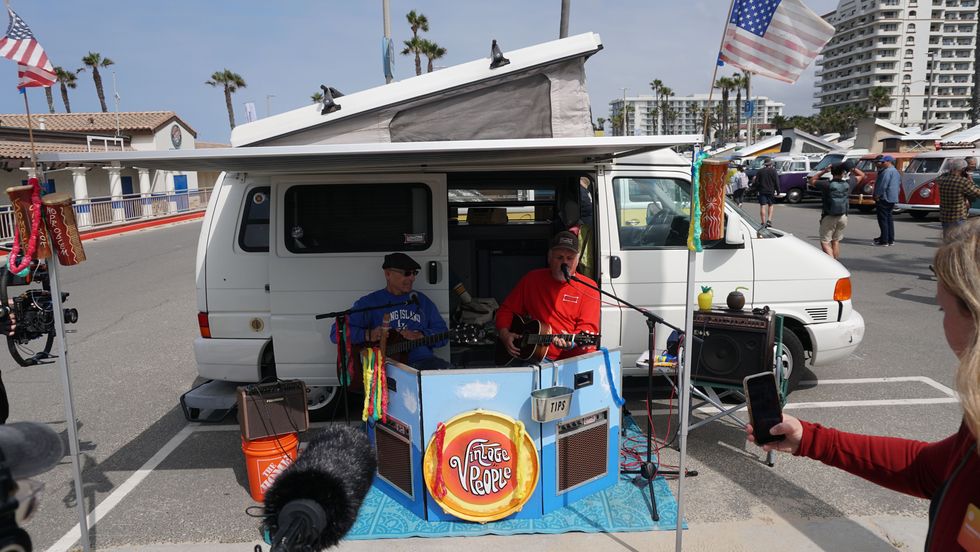All These Historic VW Buses Showed Up To Help Launch The VW ID. Buzz
By: BY MARK VAUGHN

All These Historic VW Buses Showed Up To Help Launch The VW ID. Buzz
Private owners brought classic Volkswagen vans to celebrate the arrival of the new ID. Buzz.

ALL PHOTOS ARE BY MARK VAUGHN
Volkswagen introduced the new US-spec ID. Buzz in Huntington Beach on Friday, and to help celebrate the company organized a massive gathering of old-school VW vans from every generation ever sold in the States.
The first-generation T1 Type 2 is the one with the split windshield. Second-gen vans are often called Bay Windows because of their wide curved windshields. Some people call them the "Loaf of Bread" because of their shape. The Vanagon was the third generation, distinguished by its sharper edges and flat surfaces. And the Eurovan, or T4, was the last VW van sold in America, ending with the 2003 model year.
The official estimate for all the historic vans that showed up to help launch the new ID. Buzz was that there were 280 of them, with many owners popping the tops of their rigs and spending the night in the parking lot at Huntington Beach. Thank you, van owners, for bringing your historic Volkswagens. Can't wait till the new ID. Buzz goes on sale here in the US in the fall of 2024.















For a while, in the 1960s and '70s, people would cut the middle out of the vans to create these. Note the Gulf Oil livery.

Here it is from the other side.

The Westfalia conversions offered everything you'd need to live in, or camp in, your van.

The fourth-generation T4 was sold in the US from 1990 to 2003.

Peace, man!

This T1 had doors on both sides.
The first-gen vans had a wide range of engines, from a 1.1-liter, 2-liter, 5-liter, and even a 6-liter sold only in Brazil. None made enough horsepower.


No politics, no religion, no instagrams, and commentary must be civil. The ToS and the CoC will be enforced, and anything that the administrator deems to be offensive will be deleted. YouTubes, videos and images that the administrator is unable to open must be described and explained or they will be deleted.































This article with almost 50 photos is going to be eye candy for anyone who is into that good old-fashioned VW bus. You will see almost every variation of that vehicle, and explanations by the author. It took me hours to post it because it was too big for "Fetch" to handle.
I can think of two movies I've watched in the past few years that have a VW bus in them - Little Miss Sunshine, where it was used as a family van, and Flashback, where it was a hippie bus.
I HAD to post this article. It used my name all through it.
OMG, I lived about one block from where these photos were taken in HB for 20 years. I had a 1971 Westfalia and before that a 1966 Bus.
It took me a sec to figure out why your name was all over the article, Buzz.
I would appreciate it if you would tell me the reason. Is it what the vehicle is called, the "ID Buzz"?
Yes, that is what it called, the VW ID.Buzz.
I can't explain why those big spaces appear between everything - it wan't so on what I had posted. I only left one space between everything, because I don't want the pictures to get bunched up with the text beside them instead of under or over. It could be because the photos posted HUGE and it took about 6 attempts for each one to reduce them - a reason it took hours to post.
Under photo 22 it says "The first-gen vans had a wide range of engines, from a 1.1-liter, 2-liter, 5-liter, and even a 6-liter sold only in Brazil. None made enough horsepower." But it is not right they screwed up the decimal placement. The correct engine sizes were 1.1, 1.2, 1.5, and the Brazil only 1.6 was the same dual port (intake) 1.6 the USA got in bay window T2 buses and bugs in the 1970's but Brazil was still producing the first-gen T1 throughout the 1970"s and they just put the newer dual port 1.6 engine in it. The 1.1, 1.2, 1.5 liter motors were all single port intake motors.
Holy Smoke!!! I haven't seen you here for years. Thanks for your input.